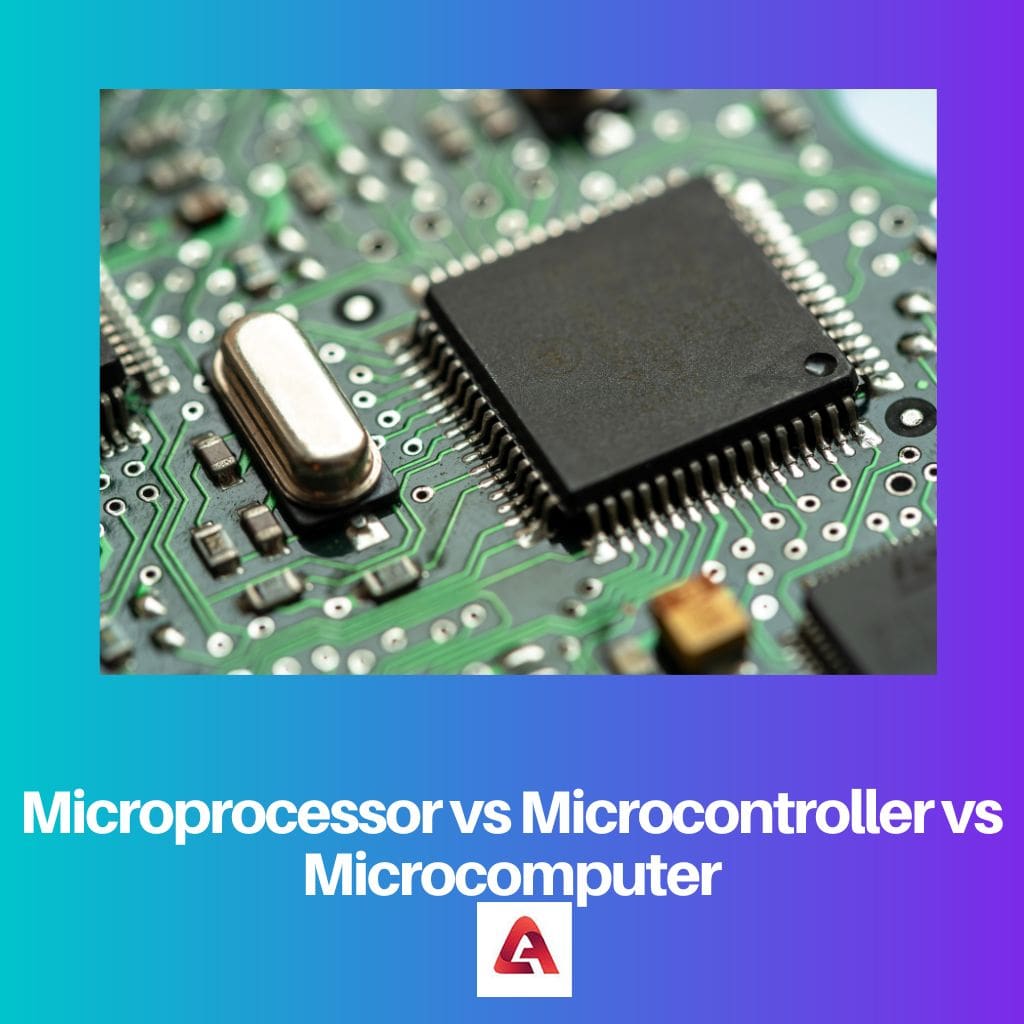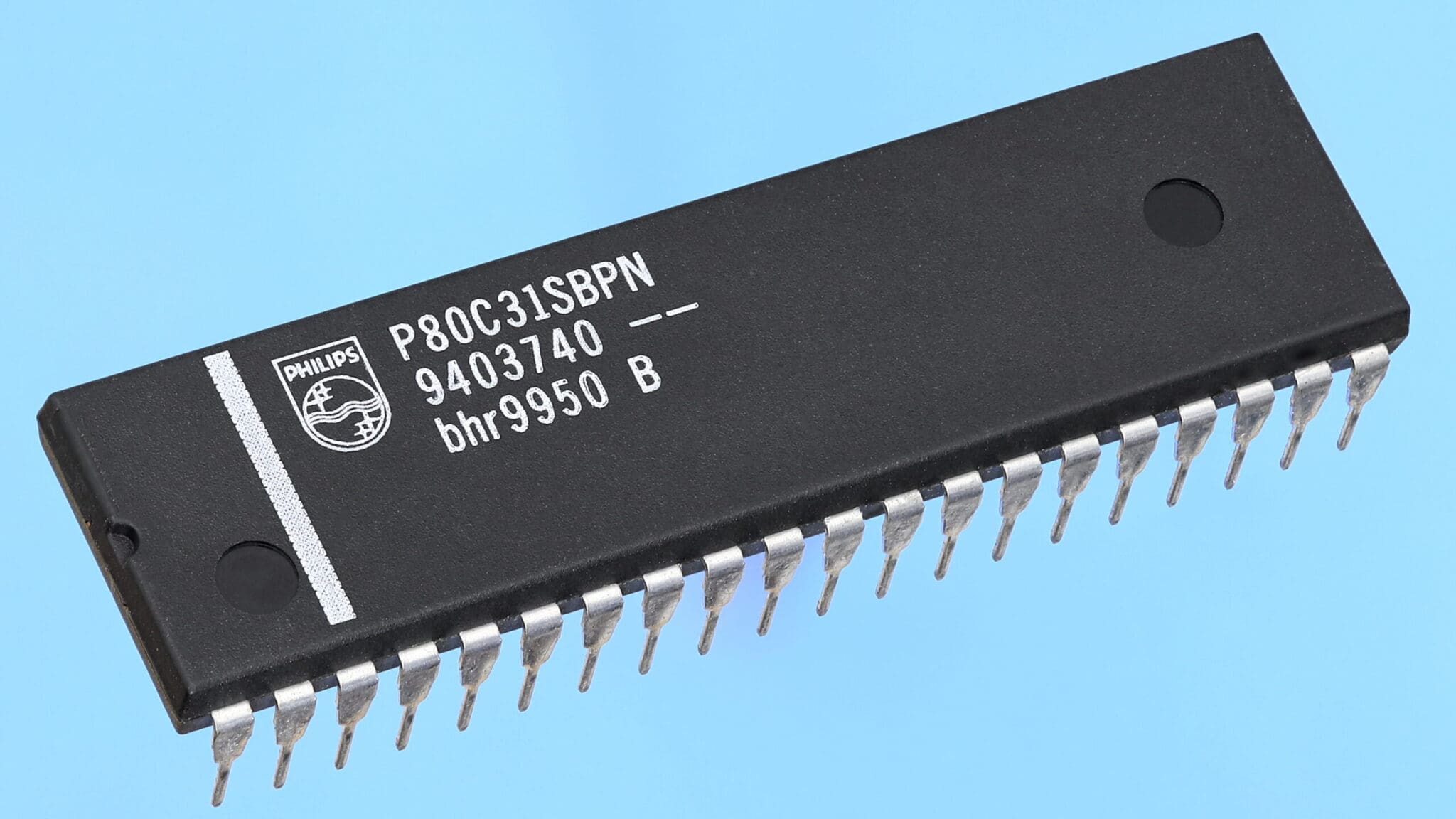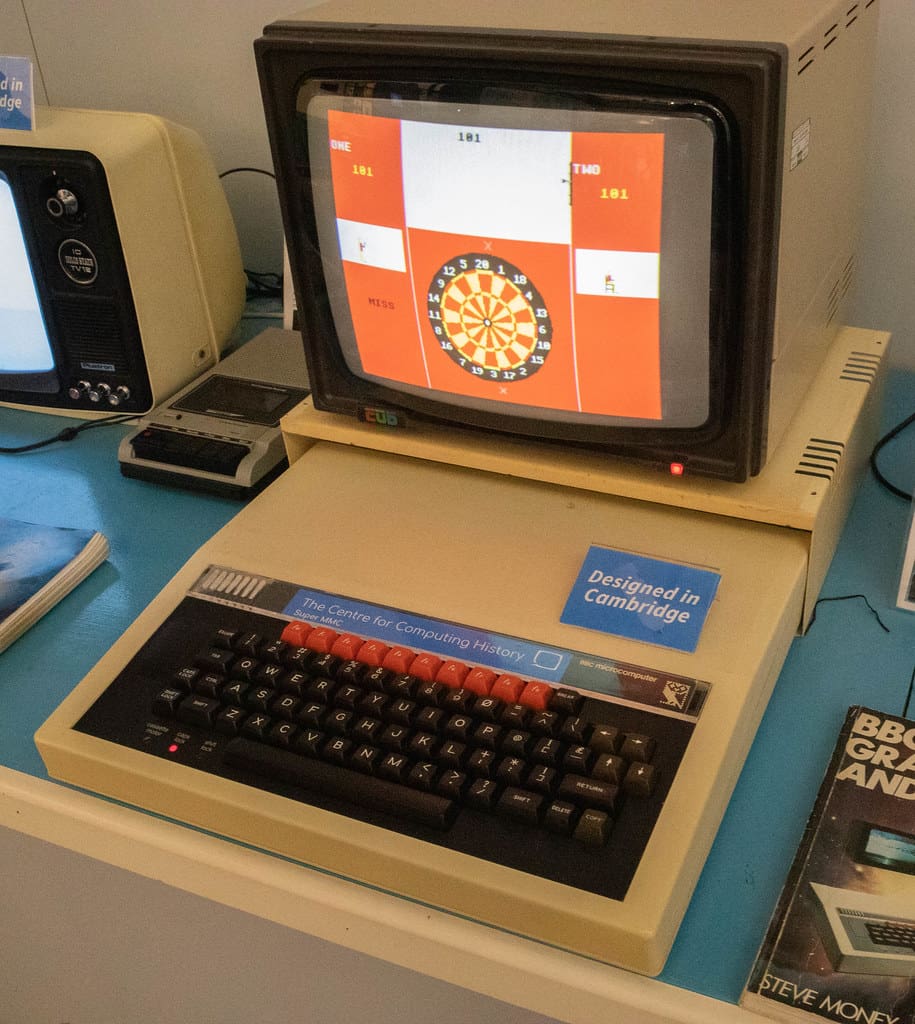The terms “microprocessor” and “microcontroller” are frequently used in conjunction with one another and occasionally as synonyms. Despite some similarities, these two chips have some distinct differences that those who truly understand them know.
Engineers are able to distinguish between them based on dependable experience. However, since a microprocessor and a microcontroller look the same, it might be difficult for a novice to tell them apart.
A microcomputer is a fully functional computer designed for solitary use that is produced on a smaller scale. But what are the main differences between them? Let’s find out!
Key Takeaways
- Microprocessors are central processing units (CPUs) executing instructions and processing data in digital systems.
- Microcontrollers are integrated circuits that combine microprocessors, memory, and input/output peripherals on a single chip, used in embedded systems.
- Microcomputers are small, general-purpose computers with microprocessors, memory, and input/output devices, used for personal computing tasks.

Microprocessor vs Microcontroller vs Microcomputer
A microprocessor is a tiny processor chip inside a microcomputer that performs Arithmetic and logic operations. Microcomputer is a complete computer system based on a microprocessor for functioning. Microcontroller is a computer system designed for embedded systems to control different functions.
Comparison Table
| Parameters of Comparison | Microprocessor | Microcontroller | Microcomputer |
|---|---|---|---|
| Speed | Due to their reliance on communication with external peripherals, they occasionally operate more slowly. | They can be modified to run optimized code to complete a specific task. | High processing speed. |
| Power | Small amount of power | Energy consumption | Small amount of power |
| Cost | Less expensive | Lower | Reasonably priced |
| Architecture | Includes a processor and numerous other chips that provide the memory serial interface | Combines on a single chip all necessary computing components. | CPU, a Memory Unit, and Input-Output Units (devices). |
| Application | Implement CPUs into computing | IImplement CPUs into computing | Data and word processing |
What is Microprocessor?
Microprocessors are single-chip processors that can handle micro-instructions. Micro-instructions are instructions that take the form of 0s and 1s. The microprocessor, which also comes in the form of a single integrated circuit, is the microcomputer’s CPU.
Thus, the microprocessor’s key components will be the Control Unit (CU) and Arithmetic Logic Unit (ALU) of a microcomputer. The Intel 8085 microprocessor is one instance. A microcomputer will also have the features listed below in addition to its microprocessor:
- Program storage in ROM, PROM, EPROM, and EEPROM
- RAM for data, interim results, and final outcomes storage
- I/O equipment for contacting the outside world
- I/O ports are used for I/O device communication.
The use of microprocessors is widespread in the modern world. Hardware such as gates, flip-flops, and other components was used for a logic design prior to the introduction of the microprocessor. A minicomputer was just too expensive.
The use of hardware for logic design has been replaced with the invention of the microprocessor. Its flexible instrumentation allows simple software changes to alter the system’s properties. In addition, new generations of applications have emerged that were not previously considered due to the prohibitive cost of a minicomputer or the difficulty of designing hardware-based logic.

What is Microcontroller?
A microcontroller is a compact microcomputer that is made to carry out the particular functions of embedded systems, such as displaying microwave data and receiving remote signals.
The processor, memory (RAM, ROM, EPROM), Serial ports, peripherals (timers, counters, etc.), and other components make up the typical microcontroller.
Types of Microcontrollers
- Bit – The microcontroller is further classified into three types based on the bit configuration.
- 8-bit microcontrollers are used to carry out mathematical and logical operations such as addition, subtraction, multiplication, and division. The Intel 8031 and 8051 are two examples of 8-bit microcontrollers.
- 16-bit microcontrollers: These devices are utilized for arithmetic and logical operations when greater precision and speed are needed. An example of a 16-bit microcontroller is the Intel 8096.
- 32-bit microcontrollers: These are commonly found in automatically operated appliances, such as automated operating systems, medical appliances, etc.

What is Microcomputer?
A compact, affordable computer with constrained capabilities is referred to as a microcomputer. It shares the same architectural building blocks seen on a computer. Modern microcomputers are smaller in size.
Today’s versions are the size of a notebook. However, their sizes will also be reduced more in the days to come. People can own them as their personal computers because of their lower costs. Due to mass production, they are getting even less expensive. When they first started, they weren’t all that powerful.
Their internal procedures and directives were severely constrained. However, modern microcomputers can now perform floating-point arithmetic operations in addition to multiplying and dividing signed and unsigned numbers.

Main Differences Between Microprocessor and Microcontroller and Microcomputer
Microprocessor
- Computer systems’ brains are their microprocessors.
- Since it simply has a processor, external connections are required for the memory and I/O components.
- The circuit grows in size because external connections for memory and I/O are required.
- Compact systems cannot use it.
- The overall system is expensive.
Microcontroller
- The brain of an embedded system is the microcontroller.
- A processor, internal memory, and I/O components are all present in a microcontroller.
- It can be utilized in small systems.
- The overall system has a minimal cost.
- Simple 4-bit processors up to complicated 32- or 64-bit processors make up the central processing unit.
Microcomputer
- Its primary processing unit is a single integrated semiconductor chip.
- Contain memory in the form of input/output (I/O) ports, read-only memory (ROM), and random access memory (RAM).
- It is a compact, reasonably priced computer.
- Microcomputers gained popularity with the development of increasingly powerful microprocessors in the 1970s and 1980s. A microprocessor can be divided into three segments: an arithmetic/logic unit (ALU), a register unit, and a control unit.


